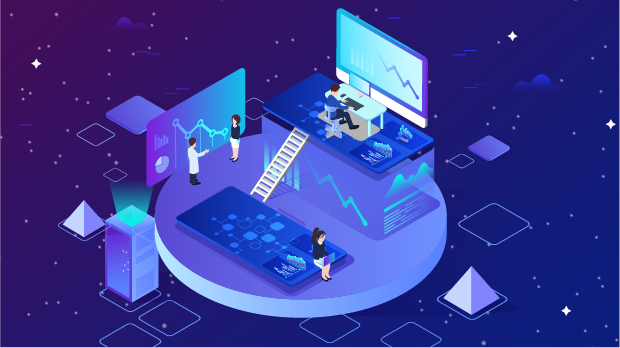In the ever-evolving world of internet technology, HTTP/2 has become a game changer for optimizing web performance. For educational institutions, proxy websites serve as essential tools for managing internet traffic, ensuring secure and efficient browsing, and controlling access to web resources. But how compatible are proxy websites for schools with HTTP/2, and what implications does this have for their performance and security? As HTTP/2 continues to gain widespread adoption, understanding its impact on proxy websites in educational settings becomes crucial. This article delves into the compatibility of proxy websites with HTTP/2, exploring how this protocol affects performance, security, and usability, and offering insights into its integration challenges and solutions.Understanding HTTP/2 and its BenefitsHTTP/2, the second major version of the HTTP network protocol, introduces several key improvements over its predecessor, HTTP/1.1. Among its primary features are multiplexing, header compression, and server push, all of which contribute to a faster and more efficient browsing experience. For schools relying on proxy websites to manage internet usage and access, these benefits can significantly enhance performance.One of the standout features of HTTP/2 is multiplexing, which allows multiple requests to be sent simultaneously over a single connection, eliminating the need for multiple TCP connections. This reduces latency and speeds up page loading times, which is especially beneficial when proxying content through educational networks.Furthermore, HTTP/2’s header compression reduces overhead by compressing the data exchanged between the client and server. This results in faster communication and lower data usage, which can be crucial in environments with limited bandwidth, such as schools.Proxy Websites for School: Their Role in EducationProxy websites in educational institutions serve a variety of functions. They provide a controlled internet environment, filtering out inappropriate content, monitoring usage, and optimizing network performance. For example, proxies are often used to access region-restricted content, control internet traffic to prevent bandwidth abuse, and protect students from harmful material.In this context, proxies work by intercepting and forwarding requests between the user and the destination server. However, the performance of these proxy websites depends heavily on the underlying network protocol. Given that HTTP/2 can improve the speed and efficiency of web traffic, it’s important to assess how proxy websites interact with this protocol.HTTP/2 Compatibility with Proxy ServersWhen it comes to proxy servers in schools, compatibility with HTTP/2 can be a double-edged sword. On one hand, the protocol's benefits can significantly enhance the performance of proxy websites. On the other hand, not all proxy servers are fully optimized for HTTP/2.Older proxy servers, or those not designed to support modern web protocols, may struggle to handle HTTP/2 requests efficiently. For example, many proxies rely on the older HTTP/1.1 protocol, which does not support multiplexing or header compression. As a result, these proxies may not be able to take full advantage of the performance enhancements offered by HTTP/2.Moreover, certain security features of HTTP/2, such as its support for secure connections via TLS (Transport Layer Security), can also pose challenges for proxy websites. Educational proxies often need to inspect and filter encrypted traffic to ensure security, which can be complicated by the encrypted nature of HTTP/2 communications.Challenges and Solutions for Integrating HTTP/2 in Proxy WebsitesIntegrating HTTP/2 into proxy websites for schools presents several challenges. First, ensuring that proxy servers are updated to support the new protocol is essential. This may involve upgrading existing infrastructure or implementing new proxy solutions that are compatible with HTTP/2.One major challenge lies in SSL/TLS termination. Because HTTP/2 is often used over secure connections, proxy servers need to decrypt the HTTPS traffic to inspect it. However, handling encryption properly while maintaining the benefits of HTTP/2 can be technically challenging. Schools may need to deploy more advanced proxy servers with built-in support for TLS termination and HTTP/2 support.Another challenge is ensuring that proxy servers can fully leverage HTTP/2’s performance improvements. This may involve optimizing server configurations, implementing modern caching mechanisms, and ensuring that proxy software is updated to handle multiplexing and other HTTP/2 features effectively.Performance Implications of HTTP/2 for Proxy WebsitesThe performance implications of using HTTP/2 in proxy websites are profound. In schools, where network traffic can be heavy and bandwidth is often limited, the performance improvements offered by HTTP/2 can make a significant difference. HTTP/2’s multiplexing feature ensures that requests from multiple users can be handled simultaneously, reducing delays and improving the overall browsing experience.Furthermore, header compression and reduced connection overhead can lead to faster page load times and less congestion on the network. This is particularly beneficial for proxy websites that manage large volumes of data, such as streaming educational content, or those serving multiple concurrent users.In addition to these technical benefits, HTTP/2 can help schools improve their network security. With features like better encryption and streamlined HTTPS handling, proxy servers that support HTTP/2 can offer more robust protection against cyber threats.Security Considerations for HTTP/2 and Proxy WebsitesSecurity is a critical concern for proxy websites, especially in educational settings. With HTTP/2’s mandatory encryption and enhanced security protocols, proxy websites for schools are better positioned to offer secure browsing experiences. However, ensuring that proxies can handle encrypted traffic without compromising performance is an ongoing challenge.Proxy servers need to balance performance with security, ensuring that the decryption and inspection of HTTPS traffic does not introduce significant delays. To achieve this, schools may need to invest in more powerful proxy solutions capable of handling the increased workload imposed by HTTP/2’s encrypted connections.Additionally, as HTTP/2 enables multiplexed connections, the potential for man-in-the-middle attacks increases. Proxy websites must be configured to detect and mitigate such threats, ensuring that students and staff remain protected while accessing online resources.Conclusion: The Future of Proxy Websites in Schools with HTTP/2In conclusion, the compatibility of proxy websites for schools with HTTP/2 is an important factor in optimizing web performance, enhancing security, and providing a better user experience. While challenges remain, particularly in terms of encryption handling and ensuring that proxies are optimized for HTTP/2, the benefits of this protocol far outweigh the drawbacks.Educational institutions that embrace HTTP/2 can look forward to faster, more secure browsing experiences, better bandwidth management, and enhanced protection against cyber threats. As HTTP/2 continues to gain traction in the web ecosystem, its role in improving the functionality of proxy websites for schools will only become more significant. Schools that invest in the necessary infrastructure and technology to support HTTP/2 will be well-positioned to meet the demands of the digital age and provide students with a better online learning experience.
Jun 20, 2025

































































